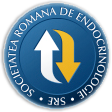
- Login
- Register
- Home/Current Issue
- About the journal
- Editorial board
- Online submission
- Instructions for authors
- Subscriptions
- Foundation Acta Endocrinologica
- Archive
- Contact
 Romanian Academy
Romanian Academy
 The Publishing House of the Romanian Academy
The Publishing House of the Romanian Academy

ACTA ENDOCRINOLOGICA (BUC)
The International Journal of Romanian Society of Endocrinology / Registered in 1938in Web of Science Master Journal List
Acta Endocrinologica(Bucharest) is live in PubMed Central
Journal Impact Factor - click here.

-
General Endocrinology
Sedighi M, Seidi H, Asadi F, Biranvand H, Banaei P, Torkashvand M, Nazari A, Rafieian-Kopaei M, Hashemzadeh P, Kiani AA, Ghorbanzadeh V
Cardioprotective Effect of Dichloromethane Valerian (Valeriana Officinalis) Extract on Ischemia-Reperfusion-Induced Cardiac Injuries in RatsActa Endo (Buc) 2023 19(2): 178-186 doi: 10.4183/aeb.2023.178
AbstractBackground. Valepotriate is an active ingredient of valerian (Valeriana officinalis) with strong antioxidant activity that is effective for numerous cardiovascular diseases. Objective. The aim of this study was to investigate the effect of an active ingredient of V. officinalis extract on ischemia-reperfusion-induced cardiac injuries in male rats. Methods. Thirty-two male rats were subjected to ischemia for 40 minutes and reperfusion for five days. The rats were divided into 4 groups of 8 each; group 1 (control) was given normal saline, and groups 2-4 were gavaged with 0.2, 0.1, 0.05 mg/kg of valepotriate extract, respectively, and received extract (0.2 mg/kg ip) two weeks before ischemia induction. Results. Dichloromethane V. officinalis (valepotriate) extract exerted a protective effect against ischemia-reperfusion-induced injuries. So that infarct size and number of ventricular arrhythmia and ventricular escape beats decreased compared to the control group. Moreover, ST segment amplitude, QTC interval, and heart rate decreased in the injured hearts and serum levels of antioxidant enzymes glutathione peroxidase, catalase, and superoxide dismutase increased. Biochemical markers malondialdehyde and lactate dehydrogenase also decreased on day 5 after the onset of reperfusion. Conclusion. V. officinalis extract may have a protective effect against myocardial ischemia-reperfusion by producing antioxidant effects. -
Endocrine Care
Pelinescu-Onciul D, Albu D
Intrauterine progestin and estradiol subdermic implant as hormonal replacement therapy for the patients with metrorrhagia in preclimaxActa Endo (Buc) 2007 3(2): 179-187 doi: 10.4183/aeb.2007.179
AbstractObjectives. To determine whether levonorgestrel releasing intrauterine device (LNGIUD) in association with oestradiol subdermic implant is an efficient and safe therapy for neurovegetative disturbances in climacterium, for the patients who had previous metrorrhagia in preclimax.\r\nPatients and method. We performed a prospective study on 18 menopausal patients (group A) with a mean age of 50.2 ? 1.5 years with LNG-IUD, inserted in preclimacterium for dysfunctional uterine bleeding (biopsy showed us simple endometrial hyperplasia) and 20 menopausal women with neurovegetative symptoms that refused hormonal replacement therapy (HRT) as control group B. In group A, patients had amenorrhea after 6.8 ? 1.7 months from IUD insertion. Our criteria for selection were: presence of neurovegetative disturbances, FSH >25 UI/L, no contraindication for hormonal replacement therapy. Group A patients had a subdermic implant with estradiol 25 mg every six months. All patients were regularly followed: first visit after one month, the next visits every three months for three years. At each visit we observed neurovegetative symptoms, uterine bleeding, endometrial thickness assessed by transvaginal ultrasonography. The Kupperman test of menopausal distress index was calculated at each visit.\r\nResults. All patients reported the absence of neurovegetative symptoms after 4.5 ? 1.8 months of therapy. Fifteen of them (83.33%) had no vaginal bleeding during the study, three patients presented minor uterine bleeding during the first six months of follow-up. Transvaginal ultrasonography showed endometrial thickness < 5mm in all our subjects. Four patients presented breast discomfort for a short period.\r\nConclusion. LNG-IUD in association with estradiol subdermic implant proved to be an efficient therapy in climacterium. The capacity of LNG-IUD to determine endometrial atrophy contributes to local safety of this hormonal replacement therapy. -
Endocrine Care
Ince S, Buldanli M, Cinar A, Hancerliogullari O, Okuyucu K
Evaluation and Management of Parathyroid Incidentalomas Detected by Routine Neck Ultrasonography with a Multidisciplinary Clinical ApproachActa Endo (Buc) 2024 20(2): 179-185 doi: 10.4183/aeb.2024.179
AbstractContext. Detection of parathyroid incidentalomas (PTIs) by ultrasonography (US) generally depends on clinical experience and it can be usually confused with perithyroidal lymph nodes. Objective. We aimed to evaluate the role of US for the detection of PTIs and define clinicopathologic features of PTIs detected during routine neck US. Design. In this retrospective study, we studied PTIs in a multidisciplinary clinical approach of nuclear medicine and general surgery clinics. Subjects and Methods. US indications and reports of 41275 were reviewed retrospectively. Of these patients, PTI was suspected in 66 (0.16%) patients. Those with a pathology-confirmed diagnosis after surgery formed Group PCD and those without a pathology-confirmed diagnosis and operation Group NPCD. These groups were compared statistically according to demographic data, laboratory tests, imaging results and postoperative findings. Results. The diagnosis of PTI was confirmed pathologically in 31 operated patients. Other pathologies rather than PTI on US were multinodular goiter, thyroiditis, thyroid nodule and perithyroidal lymph node. PTH and calcium levels were significantly higher in PCD Group;anti- TPO and anti-TG levels were significantly higher in NPCD Group. Conclusions. Lesions suspected of PTI on US should be followed-up with further evaluation by laboratory tests and imaging methods and a multidisciplinary working environment should be established. -
Endocrine Care
Zimmermann A, Grigorescu-Sido P, Rossmann H, Lackner KJ, Drugan C, Khzouz CAl, Bucerzan S, Nascu I, Popp RA, Zimmermann T, Weber MM
A Prospective Study of Insulin Resistance in Gaucher Disease Type 1 Patients with Normal Weight, under Enzyme Replacement TherapyActa Endo (Buc) 2015 11(2): 180-188 doi: 10.4183/aeb.2015.180
AbstractA certain degree of insulin resistance in patients with Gaucher disease type 1 (GD) under enzyme replacement therapy (ERT) was reported. Data on insulin sensitivity in treatment naïve patients are inconsistent. Objective. To analyse prospectively changes in parameters of insulin resistance under ERT and to estimate when they occur. Design. prospective, controlled study; three years follow-up. Patients and methods. 12 treatment naïve patients with GD type 1 (M/W 8/4), 29.5±12.9 years, without overweight, diagnosed enzymatically and by genotyping, without previous diabetes mellitus. Patients were evaluated before and every 6 months up to 3 years under ERT and compared at baseline and after 3 years with matched healthy controls. Fasting-glucose (FG), - insulin (FI), C-peptide, HOMA-IR, IRI, HOMA-B, blood count, hepatic and splenic volume, chitotriosidase, severity score index di Rocco (SSI) were assessed. Results. Baseline glycemic parameters did not differ from controls. FG increased from baseline after two years of ERT (+16.4%,p<0.010), FI (+40.3%,p=0.030), HOMA-IR (+61.2%,p=0.007) and IRI (+9.1%,p=0.010) after 18 months, HOMA-B after 2.5 years (+51%, p=0.015. After 3 years of ERT patients were more insulin resistant compared to controls (p<0.001): FG (96.0±6.2 vs. 73.2±6.4 mg/dL), FI (11.2±2.4 vs. 5.6±1.3 μU/L), HOMA-IR (2.7±0.6 vs. 1.0+0.3), IRI (3.02±0.10 vs. 2.62±0.13). FG, FI, HOMAIR, IRI, HOMA-B correlated with disease severity markers. Conclusions. This is the first controlled study which evaluates prospectively insulin resistance in GD patients, finding significant differences compared to baseline starting with 18 months ERT. -
Endocrine Care
Alzoubi A, Mahdi H, Bashir S. Al, Halalsheh O, Ebbini M Al, Alzarir M, Al-Ahmar K, Alfaqih M, Al-Hadidi AH
Normalization of Serum Vitamin D Improves Semen Motility Parameters in Patients with Idiopathic Male InfertilityActa Endo (Buc) 2017 13(2): 180-187 doi: 10.4183/aeb.2017.180
AbstractContext. Idiopathic male infertility is evident in half of infertile males. Vitamin D receptors are expressed throughout male reproductive tract, including spermatozoa, promoting motility. Epidemiological studies revealed the positive association between serum vitamin D and semen quality. However, there are no clinical studies examining the differential role of vitamin D in idiopathic male infertility. Objectives. 1) To investigate the association between vitamin D deficiency and idiopathic male infertility, and 2) To determine whether vitamin D deficient males would show restoration of semen quality parameters upon supplementation with vitamin D. Design. This was a year-long case-control study from November 2015 to November 2016. A therapeutic intervention cohort for 2 months was also performed. Subjects and Methods. 117 Jordanian males were enrolled. Following a clinical evaluation by a urologist, baseline serum vitamin D and semen fluid analyses were collected. Participants were stratified into 3 groups: controls (n=30), idiopathic infertility (n=67), and secondary infertility (n=20). Idiopathic infertility patients with low vitamin D (n= 45) were supplemented with oral vitamin D, 5000 IU, once daily for two months. Thereafter, serum vitamin D and semen fluid analyses were reassessed (n= 34; 11 patients were lost to follow up). Results. Vitamin D was significantly lower in patients with idiopathic infertility than in both controls and men with secondary infertility. Significant improvement of progressive and total sperm motility was observed after vitamin D treatment. Vitamin D correlated significantly with semen quality in the study population. However, no correlation was found between vitamin D and any of the semen quality parameters in the idiopathic infertility group. Conclusions. Vitamin D supplementation improves sperm motility in idiopathic male infertility patients with low vitamin D. Larger and longer clinical trials are warranted to validate the use of vitamin D in these cases. -
General Endocrinology
Bensalem A, Zribi N., Mnif E., Sellami A., Chakroun N.F., Ayadi F., Keskes L., Rebai T
Serum Inhibin B And Anti-Mullerian Hormone Assessment in Infertile Men with and Without Non-Obstructive AzoospermiaActa Endo (Buc) 2013 9(2): 181-188 doi: 10.4183/aeb.2013.181
AbstractContext. Inhibin B could be a good marker in predicting spermatogenetic activities and in discriminating men with spermatogenesis impairment, especially azoospermia and it would be considered as a current clinical tool in the future. Objective. This study aimed to investigate the clinical value of serum Inhibin B and AMH levels in subfertile men particularly in those with non-obstructive azoospermia (NOA). We conducted a prospective study to assess the role of inhibin B in the evaluation of male factor infertility. Patients and Methods. Thirty fertile men and three groups of infertile patients (n=91): normozoospermia (n = 40), oligozoospermia (n = 19) and NOA (n = 32), from Faculty of Medicine (Sfax, Tunisia) were investigated. Serum levels were measured by ELISA and by ELFA (FSH). Results. Inhibin B and AMH levels were significantly lower in NOA patients than in normozoospermic ones (72.6±76.8 pg/mL vs. 242.4± 124.7 pg/mL; p<0.001 and 3.7±2.9 ng/mL vs. 5.3±2.3 ng/mL; p<0.001). Only Inhibin B levels were significantly lower in NOA than in oligozoospermic (72.6±76.8 pg/mL vs. 141.3± 81.9 pg/mL;p<0.001) and were negatively correlated with FSH concentrations (r = -0.56, p = 0.001). But both Inhibin B and AMH were positively correlated with sperm count (r = 0.44, p < 0.0001and r = 0.26, p = 0.03 respectively). Conclusions. We conclude that our results support the literature data showing that serum Inhibin B level is strongly correlated with sperm count and suggesting that it could be a good marker in discriminating men with spermatogenesis impairment, especially NOA. -
Endocrine Care
Donbaloglu Z, Bedel A, Barsal Cetiner E, Singin B, Aydin Behram B, Tuhan H, Parlak M
Effects of the Gonadotropin-Releasing Hormone Agonist Therapy on Growth and Body Mass Index in Girls with Idiopathic Central Precocious PubertyActa Endo (Buc) 2022 18(2): 181-186 doi: 10.4183/aeb.2022.181
AbstractObjective. We aimed to examine the auxological findings of girls diagnosed with idiopathic central precocious puberty (CPP) at the end of the GnRHa treatment and to investigate the effect of related factors on the height gain of those patients. Design. Single-center, descriptive, cross-sectional retrospective study. Method. A total of 43 patients who were diagnosed with idiopathic CPP and treated with GnRHa between 2012 - 2021 were included in to the study. Results. A decline in height standard deviation score (SDS) from 1.20 ± 0.14 to 1.02 ± 0.06 during the therapy was observed (P<0.001). The bone age/chronological age ratio was decreased and predictive adult height was increased at the end of the therapy (P<0.001; P=0.001). Both the rates of being overweight and obesity were increased (38.6% to 50% and 9% to 15.9%) when the treatment onset compared to the end of therapy. At the end of the treatment, the mean body mass index (BMI) SDS of the overweight patients was still higher compared to the normal-weight group (P<0.001). Conclusion. We observed a positive effect of GnRHa therapy on height potential. An increase in BMI during the therapy has been also demonstrated especially in subjects who were overweight before treatment. -
General Endocrinology
Kaygusuz E, Cetiner H, Yavuz H, Cesur S, Yozgatligil C, Ayas S
Immunohistochemical Expressions of Receptors for Luteinizing Hormone/Human Chorionic Gonadotropic Hormone and for Sex Steroid Hormones in Pregnant Fallopian TubesActa Endo (Buc) 2014 10(2): 181-194 doi: 10.4183/aeb.2014.181
AbstractBackground. There is no immunohistochemical study to show luteinizing hormone receptor (LHR), estrogen receptor (ER) and progesterone receptor (PR) in the pregnant Fallopian tubes (FT). Objective. To study LHR, ER, PR expression in FT containing an ectopic pregnancy (EP) and during the menstrual phase. Design. Thirty FT were obtained from women diagnosed with EP and twenty FT collected by hysterectomy performed for benign diseases not affecting the tubes were included in this study. Assessment of immunohistochemical expression staining LHR, ER, PR in epithelium, smooth muscle cell and blood vessel endothelium in FT containing an EP and during the different phases of menstrual cycle. Results. In ectopic pregnancy group we found LHR expression in epithelium in 30 cases, muscle cell in 28 cases, and endothelium in 9 cases in FT. In menstrual cycle group we noted LHR expression in FT in epithelium in all cases, muscle cell in 4 cases. Conclusion. There is a significant difference in the proportions of the existence of LH receptor immunostaining in the muscle cells for ectopic pregnancy group as compared to the menstrual cycle groups (p < 0.001). Our findings may suggest that the women who have increased LH receptors on muscle cells in Fallopian tubes are at increased risk for having external pregnancy. -
Editorial
Vulpoi C
Fertility in polycystic ovary syndrome: new insights into an old problemActa Endo (Buc) 2008 4(2): 181-188 doi: 10.4183/aeb.2008.181
-
Endocrine Care
Mircescu G, Capusa C, Andreiana I
The management of secondary hyperparathyroidism in chronic kidney diseaseActa Endo (Buc) 2005 1(2): 181-200 doi: 10.4183/aeb.2005.181
Abstract ReferencesSecondary hyperparathyroidism, i.e. increased synthesis and secretion of parathyroid hormone and gland hyperplasia, is commonly found in chronic kidney disease. Although it is, at first, an adaptive response to the loss of renal functions in order to maintain the calcium/phosphate homeostasis and normal bone turnover, it is also an important cause of increased morbidity in this clinical setting by leading to renal osteodystrophy and cardiovascular complications. Recent advances in the knowledge on the pathogenesis of parathyroid-related complications in renal failure allowed for new therapeutic approaches. However, many problems remain to be solved in the future. This paper briefly presents the current understanding of pathogenic mechanisms of hyperparathyroidism, bone disease and vascular calcification during chronic kidney disease. In addition, it summarizes the main therapeutic methods available today for controlling secondary hyperparathyroidism and the challenges of practitioners concerning this issue. Finally, the current status of secondary hyperparathyroidism management is analyzed, with emphasis on the Romanian experience.1. K/DOQI Clinical Practice Guidelines for Bone Metabolism and Disease in Chronic Kidney Disease. Am J Kidney Dis, 42(4, suppl 3):S1-S201, 2003. [CrossRef]2. Hsu C-Y, Chertow GM. Chronic renal confusion: Insufficiency, failure, dysfunction, or disease. Am J Kidney Dis, 36(2):415-418, 2000. [CrossRef]3. National Kidney Foundation. K/DOQI Clinical Practice Guidelines for Chronic Kidney Disease: Evaluation, Classification, and Stratification, Am J Kidney Dis, 39(suppl 1):S1-S92, 2002.4. Mircescu G, Capusa C. Chronic kidney disease: A useful concept for integrated approach of chronic renal failure (Part I). Medicina Interna, 1(4):17-28, 2004.5. Fournier A, Oprisiu R, Hottelart C et al. Renal osteodystrophy in dialysis patients: Diagnosis and treatment. Artif Org, 22(7):530-557, 1998. [CrossRef]6. Elder J. Pathogenesis and management of hyperparathyroidism in end-stage renal disease and after renal transplantation. Nephrology, 6:155-160, 2001. [CrossRef]7. Cozzolino M, Brancaccio D, Gallieni M, Galasi A, Slatopolsky E, Dusso A. Pathogenesis of parathyroid hyperplasia in renal failure. J Nephrol, 18(1):5-8, 2005.8. Dusso AS, Thadhani R, Slatopolsky E. Vitamin D receptor and analogs. Sem Nephrol, 24(1):10-16, 2004. [CrossRef]9. Dusso AS. Vitamin D receptor: Mechanisms for vitamin D resistance in renal failure. Kidney Int, 63(suppl 85):S6-S9, 2003. [CrossRef]10. Urena P, Frazao JM. Calcimimetic agents: Review and perspectives. Kidney Int, 63(suppl 85): S91- S96, 2003. [CrossRef]11. Slatopolsky E, Dusso A, Brown AJ. Control of uremic bone disease: Role of vitamin D analogs. Kidney Int, 61(suppl 80):S143-S148, 2002. [CrossRef]12. Fatica RA, Dennis VW. Cardiovascular mortality in chronic renal failure: hyperphosphatemia, coronary calcification, and the role of phosphate binders. Cleve Clinic J Med, 69(suppl 3):S21-S27, 2002. [CrossRef]13. Hruska KA, Saab G, Chaudhary LR, Quinn CO, Lund RJ, Surendran K. Kidney-bone, bone-kidney, and cell-cell communications in renal osteodystrophy. Semin Nephrol, 24(1):25-38, 2004. [CrossRef]14. Hercz G. Regulation of bone remodeling: Impact of novel therapies. Semin Dialysis, 14(1):55-60, 2001. [CrossRef]15. Malluche HH, Langub MC, Monier-Faugere M-C. The role of bone biopsy in clinical practice and research. Kidney Int, 56(suppl 73): S20-S25, 1999. [CrossRef]16. Couttenye MM, D?Haese PC, Verschoren WJ, Behets GJ, Schrooten I, De Broe ME. Low bone turnover in patients with renal failure. Kidney Int, 56(suppl 73): S70-S76, 1999. [CrossRef]17. Ganesh SK, Stack AG, Levin NW, Hulbert-Shearon TE, Port FK. Association of elevated serum PO4, Ca ? PO4 product and parathyroid hormone with cardiac mortality risk in chronic hemodialysis patients. J Am Soc Nephrol, 12(10):2131-2138, 2001.18. Giachelli CM, Jono S, Shioi A, Nishizawa Y, Mori K, Morii H. Vascular calcification and inorganic phosphate. Am J Kidney Dis, 38(suppl 1):S34-S37, 2001. [CrossRef]19. Wilmer WA, Magro CM. Calciphylaxis: Emerging concepts in prevention, diagnosis, and treatment. Semin Dialysis, 15(3):172-186, 2002. [CrossRef]20. Shanahan C. Bone turnover and extraosseous calcifications: Is there a relationship? Presentation at the ASN Renal Week, San Diego, Nov 2003, www.hdcn.com/symp/03asn/07/sha/sha.htm.21. Block G, Port FH. Calcium phosphate metabolism and cardiovascular disease in patients with chronic kidney disease. Semin Dialysis, 16(2):140-147, 2003. [CrossRef]22. Elder GJ. Targets for phosphate control in chronic kidney disease. Nephrology, 9:2-6, 2004. [CrossRef]23. Block GA, Martin KJ, de Francisco AM et al. Cinacalcet for secondary hyperparathyroidism in patients receiving hemodialysis. N Engl J Med, 350:1516-1525, 2004. [CrossRef]24. De Francisco AM, Ellis HA, Owen JP et al. Parathyroidectomy in chronic renal failure. Q J Med, 55(218):289-315, 1985.25. Malberti F, Marcelli D, Conte F, Limido A, Spotti D, Locatelli F. Parathyroidectomy in patients on renal replacement therapy: An epidemiologic study. J Am Soc Nephrol, 12:1242-1248, 2001.26. TominagaY, Uchida K, Haba T et al. More than 1000 cases of total parathyroidectomy with forearm autograft for renal hyperparathyroidism. Am J Kidney Dis, 38(4, suppl 1):S168-S171, 2001. [CrossRef]27. Mircescu G, C?pu?? C. Guidelines for surgical management of secondary hyperparathyroidism in dialysis patients. Nefrologia, 9(23-24):51-56, 2004.28. De Francisco AM, Fresnedo GF, Rodrigo E, Pinera C, Amado JA, Arias M. Parathyroidectomy in dialysis patients. Kidney Int, 61(suppl 80): S161-S166, 2002. [CrossRef]29. The CARI Guidelines (Caring for Australians with Renal Impairment) for bone disease, calcium, phosphate and parathyroid hormone. /www.kidney.org.au/cari/drafts/bone_management. Australian Kidney Foundation and Australia New Zealand Society of Nephrology30. Mircescu G et al, on behalf of the Romanian Society of Nephrology. Guidelines for best medical practice: Secondary hyperparathyroidism in chronic kidney disease, Ed. InfoMedica, Bucharest, 2005.31. Kim J, Pisoni RL, Danese MD et al. Achievement of proposed NKF-K/DOQI bone metabolism and disease guidelines : Results from the Dialysis Outcomes and Practice Patterns Study (DOPPS). Abstract for ASN Annual Meeting - San Diego, J Am Soc Nephrol (Nov), 1